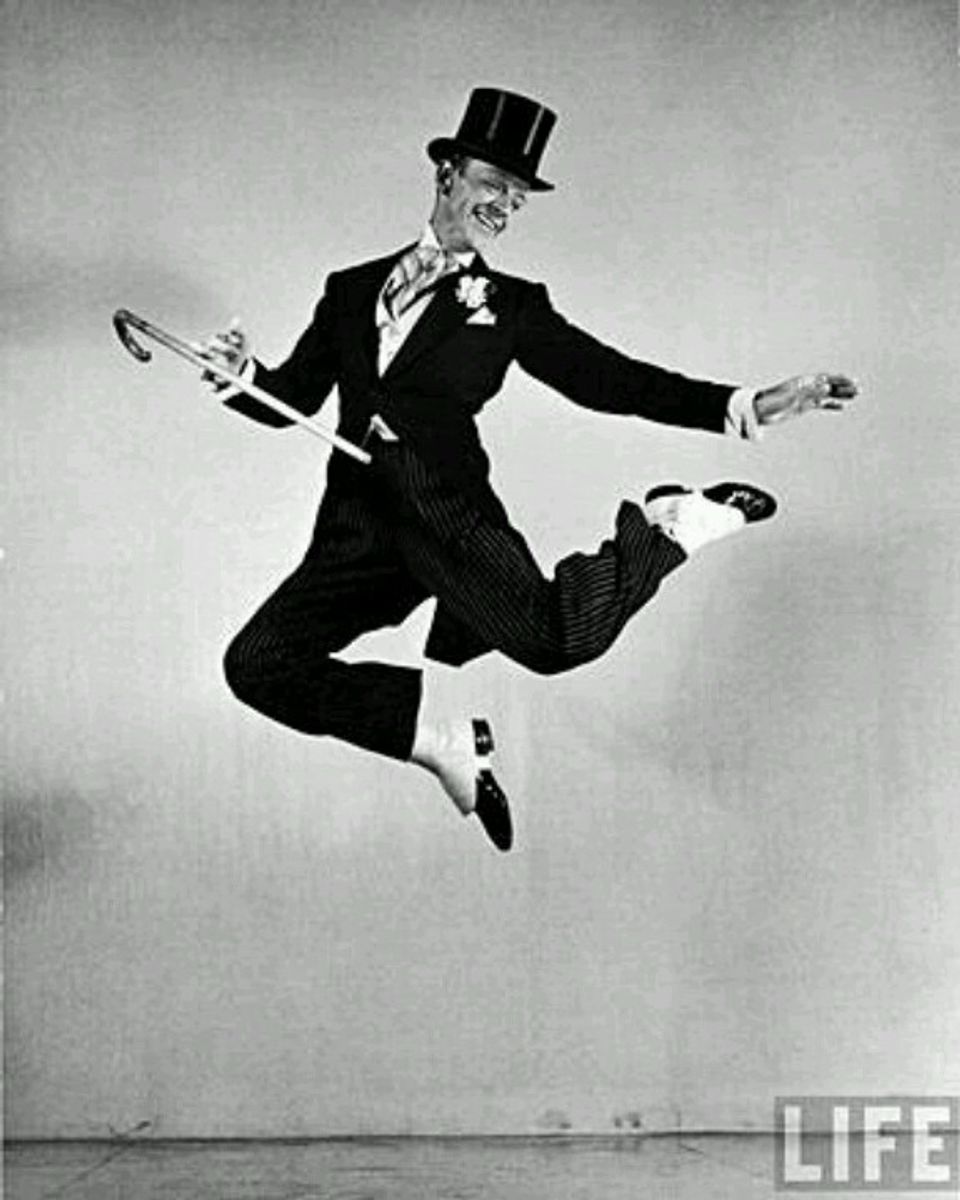
Bob Landry, Fred Astaire in "Puttin’ on the Ritz," 1945, Time & Life Pictures

"That is not me," Jules Feiffer said, referring to the Bob Landry black-and-white photograph of an elegantly dressed Fred Astaire performing "Puttin' on the Ritz" from the 1946 movie Blue Skies. Feiffer spoke recently on Landry's photograph in the museum's McEvoy auditorium as part of the American Pictures lecture series, which pairs works of art with leading figures of contemporary American culture. "First of all," the self-deprecating Feiffer added, while walking closer to the image of an airborne Astaire, "I'd get about this high and the top hat would be off." As he walked back to the podium, he said, "I have always loved Fred Astaire as a model, inspiration, and someone I wanted to emulate in my drawings."
Feiffer, celebrated cartoonist, playwright, and children's book author may not be Fred Astaire on the outside, but he definitely harbors an inner Astaire. "The next is me," he said, as he continued his talk, "my dancer from 1957. She is my self-portrait." I first became a fan of Feiffer's dancer in the pages of the Village Voice when I was living in New York. It was easy to fall in love with her. She seemed to be a modern dancer in the Martha Graham mold, and she took us through her loves, challenges, angsts, and more angsts. But, until Feiffer's presentation, I hadn't realized that she was a stand-in for the cartoonist.
Born in 1929, Feiffer, a child of the Great Depression, found solace in movies (like most of the country) and loved what he saw on the big screen. He admired William Powell and Myrna Loy for their Thin Man films filled with wit and repartee. "It was a movie marriage and not my parents' marriage," Feiffer joked. "You didn't find much repartee in the East Bronx." As a young man, Feiffer fell in love not only with the movies, and of course the movie actor he most wanted to be was Fred Astaire, but also comic books. He loved the cartoon world and sentences that didn't end in periods, but exclamation points. "Comics gave me motivation," Feiffer told us.
"I started to draw [Astaire], putting down lines, and my attempt was to make dance on paper. Fred was my partner, my inspiration. Fred led. I followed," Feiffer said, as he took us through drawings of his dancer and the victim/hero Bernard, a character he created in the 1960s, and of course, watercolors of Astaire. For the last image of the afternoon, he left on the screen a drawing of Astaire, but this one sported a beard and glasses, just like our speaker.
The American Pictures series, a partnership between the Smithsonian American Art Museum, the National Portrait Gallery, and Washington College concludes on May 1 with historian David Hackett Fischer speaking on Emanuel Leutze's Washington Crossing the Delaware


















